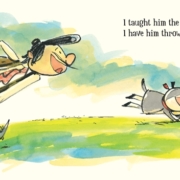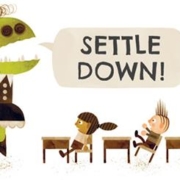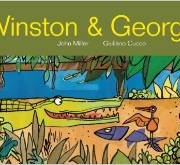I believe most people want to improve their lives, but they just need the tools, resources and support structures to do it. The money that I raise makes it possible for The Foundling to make those connections for the people who need them.
Location: New York, New York
Profession: Director of Corporate and Foundation Relations at New York Foundling
Twitter: @Greenekg
Where do you work?:
Founded in 1869 as a home for abandoned children, The Foundling today offers an expansive array of services for underserved children, families, and adults with developmental disabilities. Whether it’s an abused child in need of a foster home, a young mother who lacks the skills to care for her child, or a young person lost in the juvenile justice system, The Foundling provides the resources necessary to rebuild lives and rebuild families.
Who inspires you to raise money?:
There are so many people in need in this city, and I don’t buy into the idea that people are poor because they don’t try hard enough. I believe most people want to improve their lives, but they just need the tools, resources and support structures to do it. The money that I raise makes it possible for The Foundling to make those connections for the people who need them.
Describe a typical day:
I spend my time researching prospects and writing grants, and networking with foundations and corporations who have the potential to support our work. So much of fundraising is about relationships, and you have to invest the time into building and maintaining them.
What drew you to work at your nonprofit?
I was really inspired by The Foundling’s holistic approach to poverty. We take a nuanced look at the underlying causes that lead our clients to be in need of our services, and then use evidence-based programs that address the issues faced by the whole person and the whole family. I was also really blown away by The Foundling’s level of execution as an organization.
We have a strategic plan, senior staff get together regularly to brainstorm, there is a dedicated Continuous Quality Improvement department, and an overall investment in organizational capacity. We also have a dedicated Business Operations team that has done amazing work to cut costs, utilize our resources more effectively, and raise the level of awareness of The Foundling in the community. You don’t see these traits in a lot of nonprofits, so it really stood out to me and made me want to be a part of the team.
Can you share an example of a meaningful way your organization makes a difference?
I’ll share an example from one of my favorite programs, the Crisis Nursery, because I think it really showcases the uniqueness of The Foundling’s approach to poverty and the issues that exacerbate it.
The Crisis Nursery, a completely free and voluntary program, offers a safe place to bring a child or children for up to 21 days, while parents deal with short-term crises that could otherwise easily turn into disaster, such as impending homelessness, hospitalization, drug rehabilitation, and domestic violence. While the children are staying with us, we have a team of social workers who work with the family to help them stabilize their situation, and then follow up with them for several months after their stay, to make sure that everyone is on the right track. Right now, we’re particularly proud that over 95% of the families who used the Crisis Nursery have not had to be re-admitted for the same issue.
I like to give the example of the mom who struggles with substance abuse issues. Without a place like the Crisis Nursery, she has to choose between seeking treatment by going into a rehab program, or keeping her children with her and leaving her issues untreated. By giving her a safe place for her children to stay, we enable her to do both, and ultimately make it possible for her to be a better parent, which in turn gives her children a better chance at success in life.
How do you give of your time personally?:
When I was unemployed during the Recession, so many people who I barely knew were willing to sit down with me and make connections for me and help me figure out what my next steps were. I was really humbled by that, and feel really grateful. I try to pay that forward as much as possible now. I also recently completed a 3-year mentoring match with iMentor, where I worked with a high-school student from her junior year through her transition into her first year of college. And I’m on the board of the Philolexian Foundation, which supports Columbia University’s literary debate society of the same name, with which I was active in college.
What advice do you have for others considering the field?:
Don’t think of nonprofit development work as a monolithic industry. There are so many different aspects to it, and they all overlap to some extent: large organizations, small organizations, foundations, corporate philanthropy, consulting. Each of these has their own peculiarities of culture and plays to a slightly different skill set. Then you have all the hybrid positions, that do fundraising PLUS communications or fundraising PLUS HR or Operations. You don’t have to get pigeon-holed.
If you’re not happy with what you’re doing, think about exploring one of these other areas. And if you are trying to gain a foothold in the industry, I would encourage jobseekers to make sure that their search encompasses the full range of the fundraising / philanthropy community. Every place is different, and can inform your practice in a unique way.
What drew you to work in this industry?:
Fundraising has always been something that’s comfortable for me. I like talking to people, and I like sharing about the things that I’m passionate about. As a teenager, my dad used to take me to Greater Miami Jewish Federation’s Super Sunday tele-thons, where we would all sit in a huge room and call donors for their annual contribution. That got me my first fundraising job in college, and it just went from there.
Photo Credit: www.chazcruz.com
Source: http://www.whywegive.co/erin-greenbaum/















